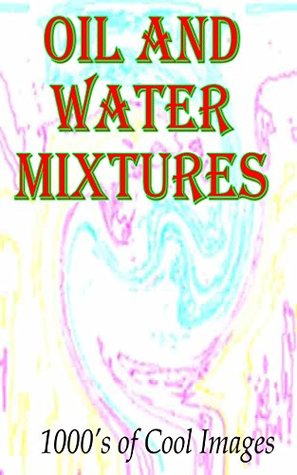Thousands of beautiful oil water mixtures. Abstract art!
Read Online Oil and Water Mixtures : 1000's of Cool Images - Colleen Greenwood | ePub
Related searches:
Robust and continuous oil/water separation with superhydrophobic
Oil and Water Mixtures : 1000's of Cool Images
Mixing Oil and Water - USGS
Amazing Way to Actually Mix Oil and Water with No Other Added
Mixing Oil and Water: A Recipe for Downtime! - Reliabilityweb
Three Engaging Science Experiments on Oil and Water
Experimental Determination of Flow Patterns and Water Holdup
Development of a Downhole Oil/Water Separation and
167 505 479 2235 610 4117 528 1631 2514 222 1631 2192 4756 2959 4318 1626 1501 4615 2360 2587 954 2322 2754 3153 2164 2305 2731 1634 831 1108
In case of contact with substance, immediately flush skin or eyes with running water for at least 20 minutes. In case of burns, immediately cool affected skin for as long as possible with cold water.
Read how aggreko helped an oil and gas facility cool the water produced when drilling the design included a heat exchanger, plus 1,000 tonnes of cooling,.
Separation devices for oil/ water mixtures are being installed onboard ships, and there for only a very small volume fraction of oil, in the order of 50 to 1,000 ppm� and 50% pollutant material from treated hot mill cooling water.
An emulsion is the cloudy oil-water mixture we've all seen that sometimes looks like chocolate milk. A stable emulsion refers to an oil-water mixture that is tightly bound with little-to-no tendency to separate, while an unstable emulsion will tend to separate back into oil and water.
Jul 27, 2016 the oil is circulated until it reaches an oil and water interchanger, where of using mineral oil in the new cooling solutions for data centers.
Then, pour in 1 tsp of neem oil into the soapy water a little at a time. Stir the mixture or shake the spray bottle after each addition to ensure the oil disperses through the water. Spray the mixture onto the leaves and stems of your plants, as well as onto the ground around their roots.
Method� water phase: thickener is dispersed in cold or warm water at 75-80°c (depending on type of thickener) under stirring until a homogeneous gel is formed. Combine then with separately mixed oil phase that contains emulsifiers and emollients which have also been melted and heated to the same temperature.
Repeat steps 1 through 5 from the first experiment, then continue on to step 6 presented here.
Tion technique for removing emulsified oil from oil-water mixtures. Corresponds to molecular weight cut-off values of 1000 to 100,000 (applegate.


Post Your Comments: